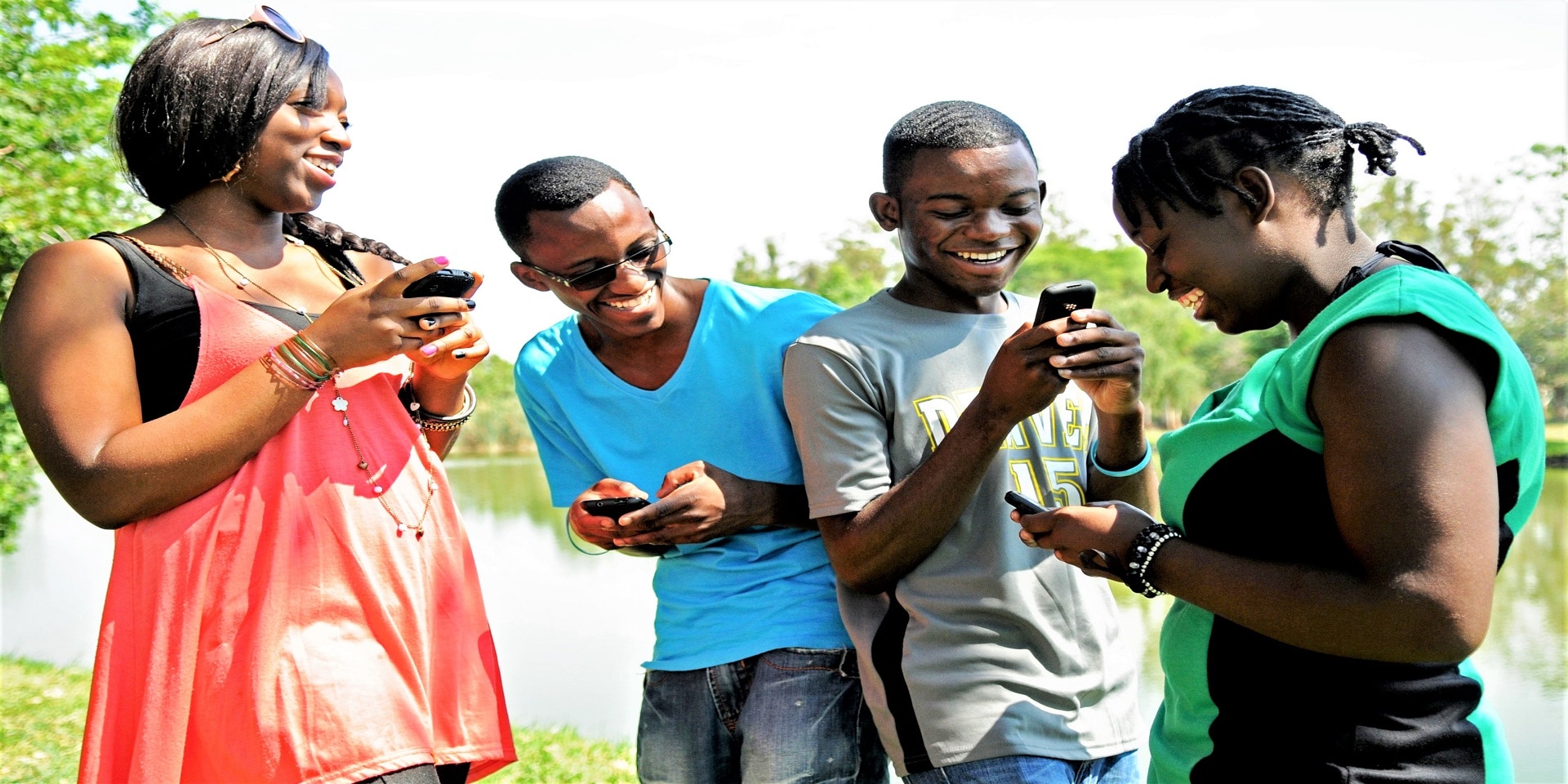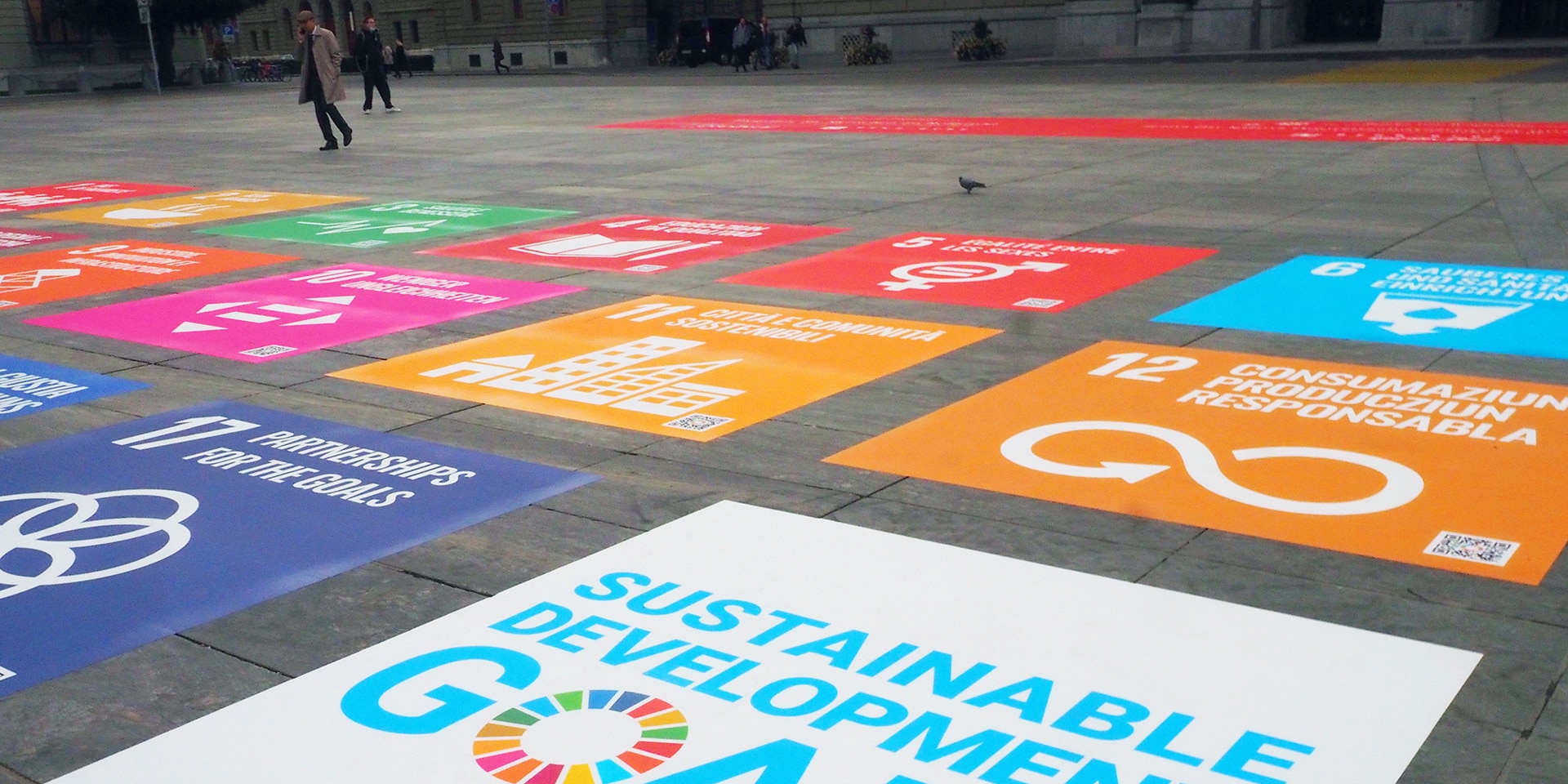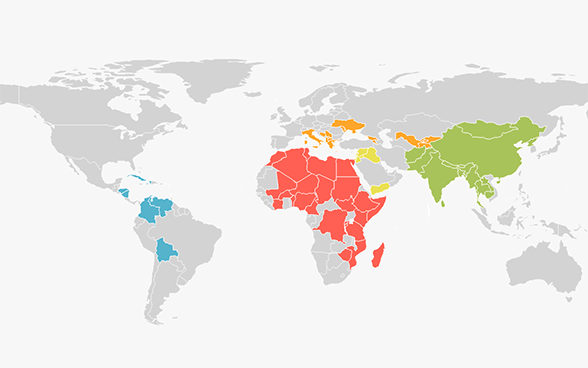World AIDS Day: Young People and the Drive for Change
This World AIDS Day, we visit Geneva and Harare to hear the stories of young champions of change. Leave no one behind: that is the message at the heart of the 2030 Agenda, also in the fight against transmissible diseases, as well as the driving force behind the work carried out by the Swiss Agency for Development and Cooperation (SDC) in collaboration with its bilateral and multilateral partners. A strong network of young people is crucial in order to reach beyond prevention.
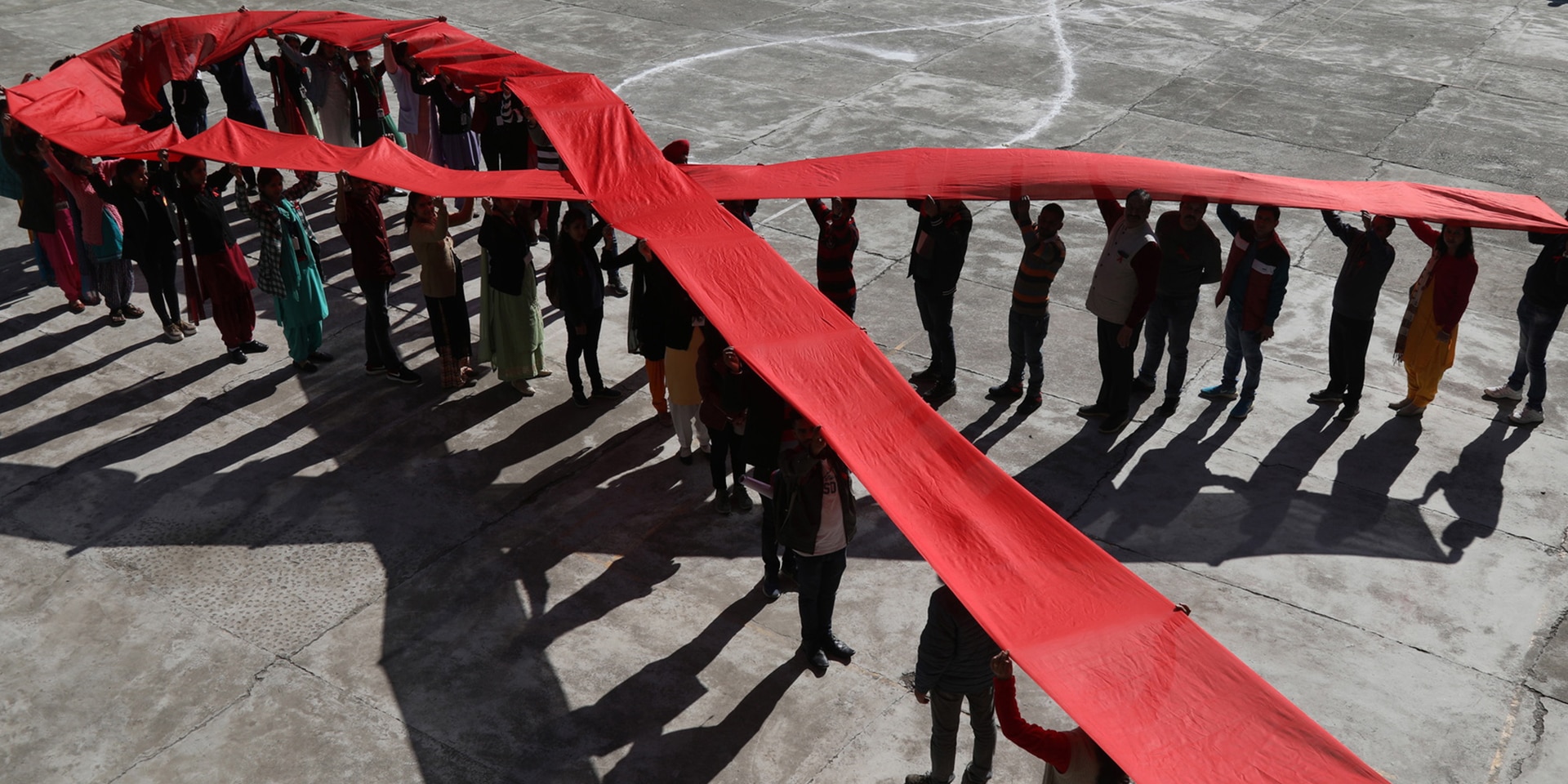
World AIDS Day serves as an annual reminder of the importance of the fight against AIDS, a disease that is still present today. Picture: 2019 AIDS awareness campaign in Dharamsala, India. © Keystone
Significant progress has been made in the fight against AIDS, particularly in Switzerland, although infection rates remain high in many low-income countries. Two global statistics put things into perspective: in 2019 the number of people living with HIV was 50% lower than in 1996; almost 38 million people worldwide lived with the virus in 2019. Of these, 20.7 million lived in sub-Saharan Africa, the hardest hit region, with women and adolescent girls most affected.
Prevention, health care and the fight against stigmatisation and discrimination: the SDC's Global Programme Health aims to incorporate these actions into a global approach on sexual and reproductive health. We reach our first destination, Geneva International, where the Joint United Nations Programme on HIV/AIDS (UNAIDS) awaits.
Multilateral efforts to achieve the goals of the 2030 Agenda
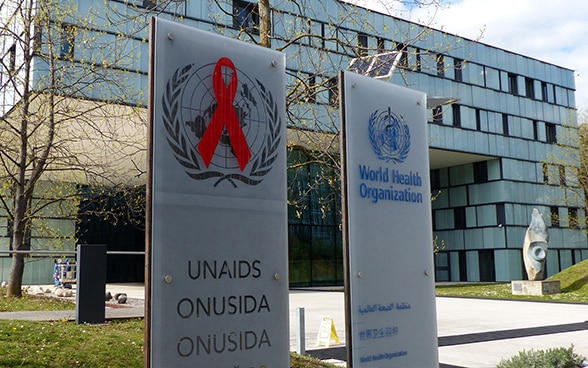
The SDC is a partner of the Joint United Nations Programme on HIV/AIDS (UNAIDS), the main advocate for accelerated and coordinated global action on the disease. Furthermore, UNAIDS policy is aligned with the objectives of Swiss foreign policy on health in regard to controlling the spread of infectious diseases and promoting the health of mothers and children as well as sexual and reproductive health. Given regional differences, the programme sets specific targets for each individual country in which it aims to reverse the trend in infection rates in an effort to eradicate the disease worldwide. Current challenges include weak health care systems in many low-income countries, with HIV/AIDS diagnosis and treatment not yet part of general health care. Furthermore, people living with the disease continue to face discrimination and stigmatisation, resulting in growing inequality and restricted access to basic information and related services.
Adolescents are the only age group in which AIDS-related deaths have risen, with young women most affected. As a result, the SDC focuses its attention on this key population group. The plan is to create a virtuous circle among young people themselves: talking about transmissible diseases and providing appropriate sex education are important in order to enable young people to make the right decisions regarding their sexual health, which will also affect their peers.
The SDC also works with its partners to promote region- and gender-specific responses. Some programmes promoted by Switzerland proactively target men and adolescent boys for example. The Swiss embassy in Harare shares its own experience.
An integrated approach that promotes change: the example of Harare
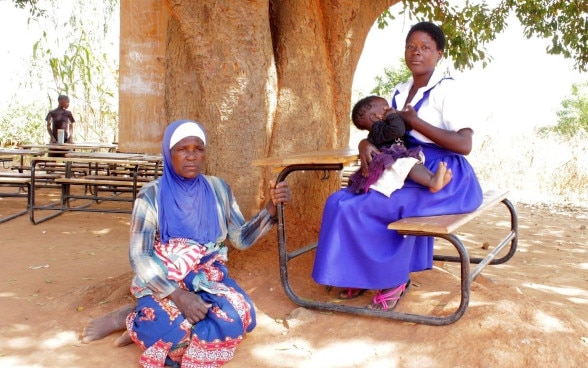
As well as promoting a multilateral approach, Switzerland advocates bilateral cooperation in this area. The Swiss embassy in Harare has supported the Safeguard Young People (SYP) programme of the United Nations Population Fund (UNFPA) since 2013. The overall objective of the programme is clear: to improve sexual and reproductive health among young people in Southern Africa between the ages of 10 and 24 and to help reduce HIV infection rates. The way to achieve this is to address young people directly through channels targeted specifically at them so as to get them involved in the awareness and prevention programmes.
Young people are offered ad-hoc courses on sex education and changing social behaviour. Information is shared, for example, via platforms such as TuneMe, a sub-Saharan Africa-wide forum for young people to discuss sexual health issues. Social media, forums and networks coordinated by trained young people, cultural events and specific courses aimed at adolescents are some of the tools used to effect change. “This course has helped me better understand the topics and problems surrounding sexuality, including those of women. It has helped me understand my peers and learn how to relate to girls,” says Mangochi dal Malawi, a participant of a discussion group for men and adolescent boys.
Young people engage with other young people to bring about change. The local SYP approach is broader and more inclusive: as well as raising awareness of sexually transmitted diseases, it aims to prevent unwanted pregnancies, unsafe abortion, gender-based violence and early marriage. These last two issues are the case of Didja, a young girl of 15 who has been given the chance to return to school after dropping out a year ago, forced to marry and have children and abused by her husband. A group of mothers supported by the UNFPA-financed Malawi Girl Guides Association have helped her return to school and supported her in caring for her child: a new virtuous circle in action. In order to secure a better future for herself, it is important for Didja to be able to access education in order to learn how to take care of herself and her body. In doing so, she is paving the way for other girls to follow.

